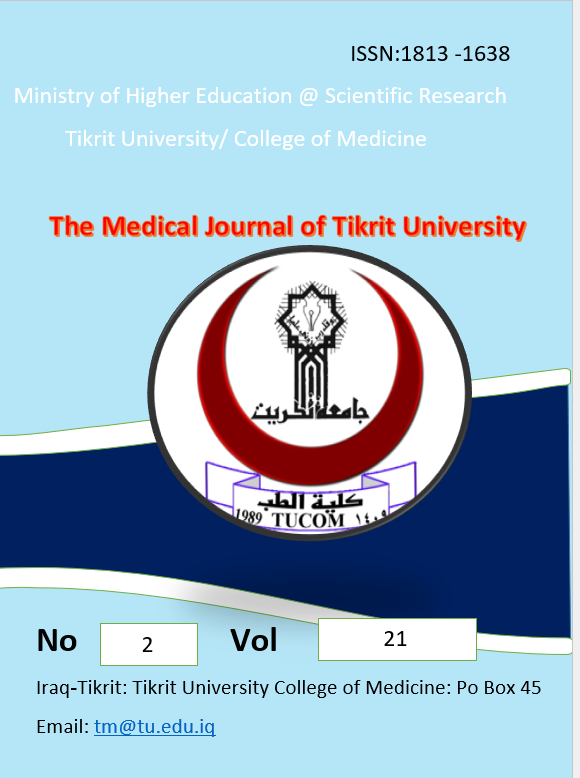Transcanalicular laser dacryocystorhinostomy
Keywords:
laser DCR ,lacrimal surgery ,minimally invasive lacrimal surgeryAbstract
The objective of this study are todescribe the technique,evaluate the effectiveness of TCLDCR with diode laser in the treatment of epiphora in adult and to review the published results after TCLDCR. A prospective , interventional case series was designed in28 patients presenting with epiphora due to NLD Obstruction .Materials and Methods: At private sector as a day case surgery in Kirkuk citythe procedure was performed under general anesthesia. We achieved osteotomy by applying laser energy via an optic fiber, using a 980 nm diode laser with power of 10 Watts. At the last step bicanalicular silicone stent was inserted . Success of procedure was absence of epiphora (subjective), or patency of the lacrimal drainage system on irrigation (objective). Results: We performed 28 successive transcanalicular laser (TCL-DCR) with bicanalicular silicone tube intubation in 26 patients and momocanalicular silicone tube intubation in 2 cases. The average procedure time was 20 min. The silicone stents were removed three to six months after surgery. We observed absence of epiphora and a patent nasolacrimal duct on irrigation in 23 out of 28 treated eyes after six to thirty six months after operation. Five patients had epiphora despite an initial successful nasolacrimal duct intubation. This yields a success rate of 82%, with an average follow-up period of 12 months. Conclusions: The 980 nm EL-DCR with silicone tube intubation is a new contribution to the field of lacrimal surgery. It is a minimally invasive quick procedure yielding a high success rate.





